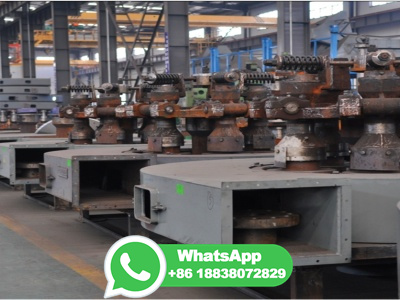
Destructive distillation of coal diagram | Destructive distillation of coal | How to colour destructive distillation of coal diagram👉How To Draw Diagrams? h...
WhatsApp: +86 18838072829
Solution. The nature of the products of the destructive distillation of bituminous coal, in absence of air, depends largely upon the temperature at which the process is carried out. When such coal is heated to 450°500° C. it yields gas and oily vapours consisting chiefly of paraffin hydrocarbons.
WhatsApp: +86 18838072829
gasifier. (Show more) coal gasification, any process of converting coal into gas for use in illuminating and heating. The first illuminating gas was manufactured from coal in England in the late 18th century by the process of carbonization or destructive distillation, heating coal in the absence of air, leaving a residue of coke as a byproduct.
WhatsApp: +86 18838072829
Coal and petroleum are formed from the dead remains of living organisms that is why they are called fossils fuels. Question 5. Give two characteristics of coal. Answer: Coal is hard and is of black in colour. Question 6. Define destructive distillation. Name the residue formed by destructive distillation of coal.
WhatsApp: +86 18838072829
Pyrolysis or destructive distillation is an irreversible chemical change caused by the action of heat in the absence of oxygen (in the presence of oxygen the name of the process is combustion). Without oxygen the energy input splits the chemical bonds and leaves the energy stored.
WhatsApp: +86 18838072829
Some of the gases produced during the distillation process can be refined to form ammonia, coal tar and light oil. Manufacturers can use these products to make a variety of products. This lab activity will use bituminous coal to produce three derivative mixtures during a destructive distillation process. Materials: Soft coal sample Flame source ...
WhatsApp: +86 18838072829
The correct option is C. 1 < 4 < 2 < 3. Destructive distillation of a ton of coal can produce 700 kg of coke, 100 liters of liquor ammonia, 50 liters of coal tar and 400 m 3 (1 cubic meter = 1000L) of coal gas. The increasing order of the amount of coal products obtained from destructive distillation of coal are:
WhatsApp: +86 18838072829
In destructive distillation coal is heated to a very high temperature of about 1000 degree Celsius It happens in the absence of air This results in the formation ofcoal gas The byproductwhich is formed in the form of gas during the manufacturing process of coke is called coal gas Coal gas is the mixture of different gases such as hydrogen ...
WhatsApp: +86 18838072829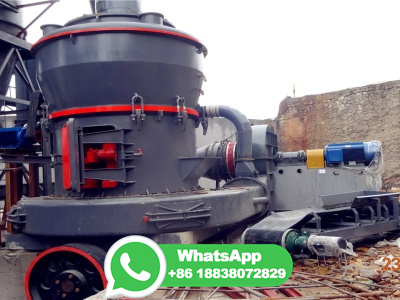
The two important products obtained from the destructive distillation of coal are: Coal gas and coal tar. The residue left in this process is coke. Coke is used mainly as a reducing agent in the extraction of metals. Question 8. Where do we get coal and how is it formed? Answer: We get coal deep in the earth's crust in coal mines.
WhatsApp: +86 18838072829
Solution. (1)Destructive distillation is a chemical process of heating substances in the absence of air or in limited supply of air. (2) It is called destructive because the chemical composition of the end product is distinctly different from the input material. (3) When coal is heated strongly in the absence of air,the products formed during ...
WhatsApp: +86 18838072829
It is also important to point here that usually, the term 'destructive distillation' is used to refer to the process through which organic materials are processed with certain reagents, limited amounts of oxygen, solvents, and catalysts like steam and phenols.
WhatsApp: +86 18838072829
Manufacturing process. Coal tar is obtained by cooling the gas that is formed during the destructive distillation of coal to approximately ambient temperature. It is a black, viscous liquid composed primarily of a complex mixture of condensedring aromatic hydrocarbons. It may contain phenolic compounds, aromatic nitrogen bases and their alkyl ...
WhatsApp: +86 18838072829
Destructive Distillation of ... the distillation process) was practically the same under all conditions, but the distribution of the available
WhatsApp: +86 18838072829
We can get benzene, toluene, napthalene, phenol, etc., from coal tar. Question 7. Name two products that you obtain from the destructive distillation of coal. What is the residue left in' this process? Give one main use of this residue. Answer: The two important products obtained from the destructive distillation of coal are: Coal gas and ...
WhatsApp: +86 18838072829
Definition The destructive distillation of coal is the process of heating coal in the absence of air. Carbon, hydrogen, oxygen, nitrogen, and sulphur are among the elements found in coal. When coal is burned in the absence of air, it produces a variety of products. Products formed by destructive distillation of Coal
WhatsApp: +86 18838072829
Destructive distillation of coal Laboratory experimentThe method involved with heating of coal without a trace of oxygen or air to acquire valuable items is...
WhatsApp: +86 18838072829
#chemistryonlinelectures #coal#destructivedistilationThe process of heating coal in the absence of air is known as the destructive distillation of coal. Coke...
WhatsApp: +86 18838072829
Desctructive distillation of coal is a process in which coal is heated strongly ata termperature of 1000^()C in the absence of air. This leads to the breakdown of coal into some useful substances. Doubtnut App Get 50 Lakh+ video solutions better than Google Install Now
WhatsApp: +86 18838072829
Coal:Coal is a fossil fuel. It is black in colour and hard as a stone. It has formed over a period of millions of years, by the gradual decay and compression of buried remains of ancient forests. Destructive distillation of coal :Destructive distillation of coal is carried out by heating coal strongly to 1000°C in the absence of air.
WhatsApp: +86 18838072829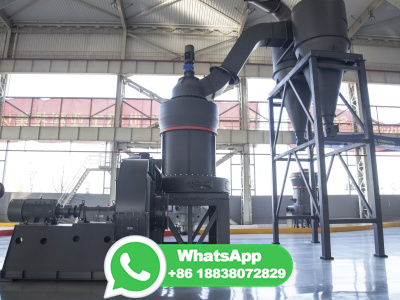
The process of heating coal in the absence of air is called the destructive distillation of coal. Coal contains a number of elements such as carbon, hydrogen, oxygen, nitrogen and sulphur. ... This is done by a process called fractional distillation which is based on the fact that the different components of petroleum have distinctly different ...
WhatsApp: +86 18838072829
The process of heating coal in the absence of air is called the destructive distallation of coal. Coal contains a number of elements such as carbon, hydrogen, oxygen, nitrogen and sulphur. When coal is heated in the absence of air, a number of products are obtained. A laboratory set up to carry out destructive distillation of coal as shown.
WhatsApp: +86 18838072829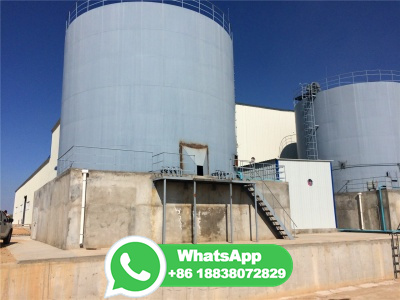
Coal gas, also known as a gaseous mixture, is a fuel made up of hydrogen, methane, and carbon monoxide produced by destructive distillation (continuous heating in the absence of air) of bituminous coal. Coal is mostly made up of carbon, with varying proportions of additional elements such as hydrogen, sulphur, oxygen, and nitrogen.
WhatsApp: +86 18838072829
Products of Coal. The following are the many valuable products generated by processing coal by heating in the absence of air: Coke, Coal Tar, and. Coal Gas. The process of rapidly heating coal in the absence of air is known as a destructive distillation of coal. When coal is burned in the presence of air, it burns primarily to create carbon ...
WhatsApp: +86 18838072829
Destructive distillation of coal is carried out by heating coal strongly to 1000°C in the absence of air. When coal is heated without air, it does not burn but breaks down to produce following byproducts: ... Process of fractional distillation of crude oil is as follows: ... Explain. Answer: Conservation of resources means not only avoiding ...
WhatsApp: +86 18838072829
Destructive distillation is a chemical process of the decomposition of unprocessed material by heating it to a high temperature. It is the processing of organic material in the absence of air or in the presence of limited amounts of oxygen. It is an application of pyrolysis. This process breaks up or 'cracks' large molecules.
WhatsApp: +86 18838072829
Destructive distillation of coal is a process in which coal is heated strongly in the absence of air. coal contains number of different elements, such as. Hydrogen. Oxygen. Nitrogen. Sulphur. When coal is subjected in destructive distillation then it produce number of product such as, coal tar and coal gas. Actually, coal tar and coal gas is ...
WhatsApp: +86 18838072829
Destructive distillation is a process of breaking down a substance into its component parts by heating it to a high temperature in the presence of a catalyst. The process is used to produce a variety of substances, including ethanol, methanol and benzene. Destructive Distillation of Coal Diagram
WhatsApp: +86 18838072829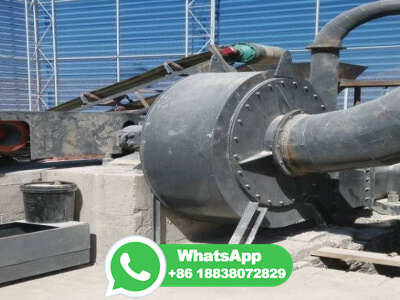
Destructive Distillation. The term destructive distillation generally refers to the processing of organic material without air or in the presence of a minimal amount of oxygen and other reagents, catalysts, or solvents, such as steam or phenols by heating it to a high temperature. It works on the principle of pyrolysis and large molecules are "cracked" during the process.
WhatsApp: +86 18838072829
Process Description1,2 All metallurgical coke is produced using the "byproduct" method. Destructive distillation ("coking") of coal occurs in coke ovens without contact with air. Most U. S. coke plants use the KopperBecker byproduct oven. These ovens must remain airtight under the cyclic stress of expansion and contraction.
WhatsApp: +86 18838072829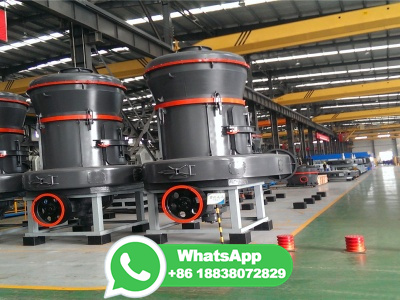
Fractional distillation is a type of distillation which involves the separation of miscible liquids. The process involves repeated distillations and condensations and the mixture is usually separated into component parts. The separation happens when the mixture is heated at a certain temperature where fractions of the mixture start to vaporize.
WhatsApp: +86 18838072829
Destructive distillation is the process of decomposing a material by heating in a closed container in an inert atmosphere and collecting off the volatile constituents. Destructive distillation of coal produces many byproducts. In the process, heated coal turns into coke, ammonia dissolves in water to form ammonia liquor and coal gas and coal ...
WhatsApp: +86 18838072829
Compare and contrast the use of coal and coke as fuels. Describe the process of destructive distillation and apply it to the process of converting coal to coke in the blacksmith's forge. Explain how blacksmiths shape iron in the forge and the science behind it. Materials. Access to research materials (library books, World Wide Web)
WhatsApp: +86 18838072829